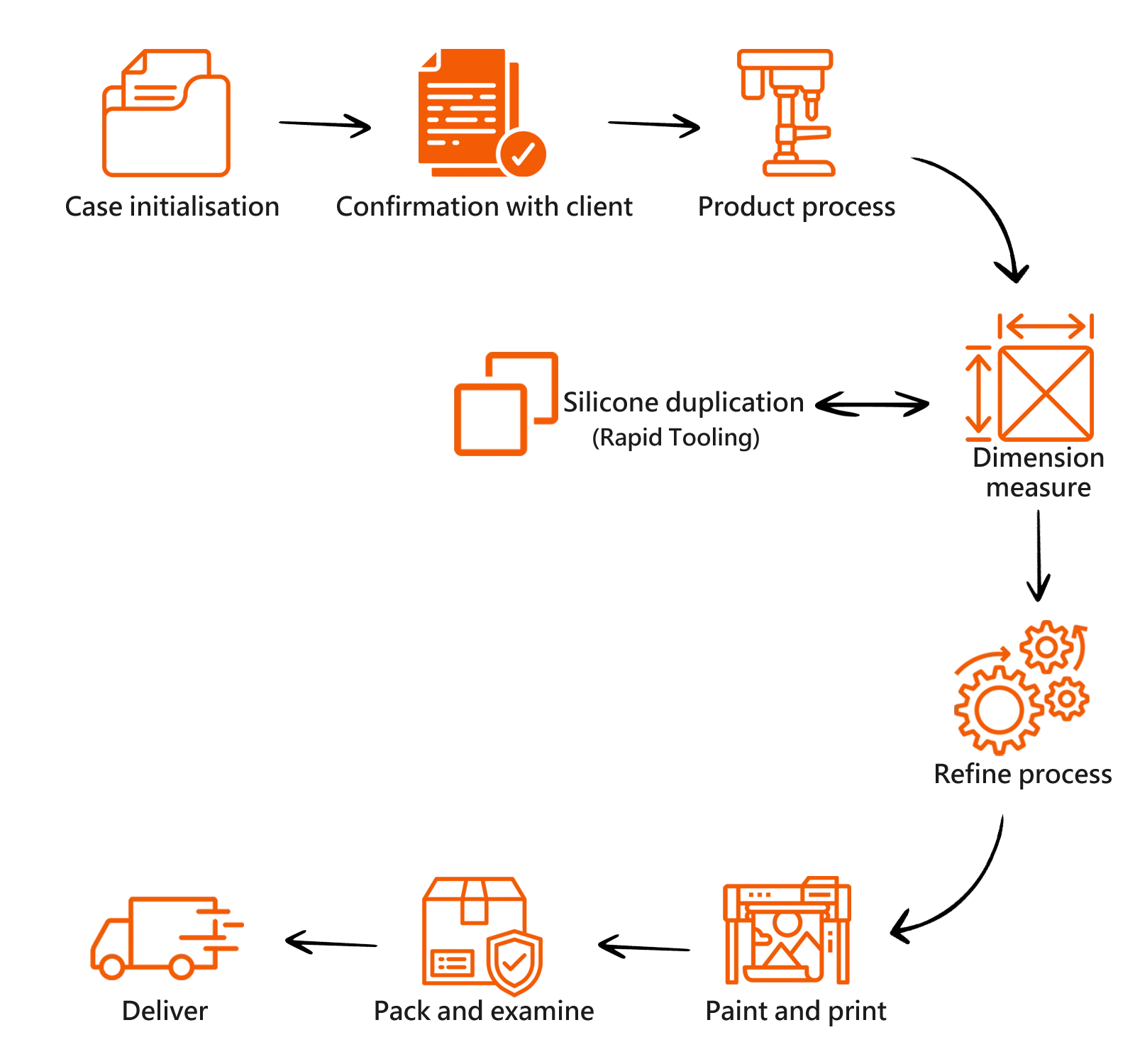The 3D file provided by client gets coverted to IGS format and read by Mastercam software to enable 2D and 3D program modification. Once the required dimensions,properties and information are set, simulation then will be performed to ensure CNC modeling process be flawless and correct. This is CNC programming.
3 axle coated typed CNC process machines are used. Compare with traditional CNC process machines, they are much safer. During the process, moldding speed can be adjusted via machine monitor, with speed highest up to 10000 rpm. This is CNC operation.
Plastic types: ABS, POM, PP, PC, PC+GF20%PEI, acrylic, nylon, bakelite, substituting wood.
Metal types: Steel: medium carbon steel. Alluminium: 6061, 7075. Copper: bronze, red bronze. Zinc: zinc alloy.
The prototype model stations in a bigger container with predefined parting line, venting and feeding holes. Once the scaled Sclerotherapy mixes with silica gel, it will be ejected into the proto type container until the siliconne hardens with about flexibility 70 degrees. Proper tools will then be used to separate upper and lower molds via the parting line without damaging the prototype model. This is the prototype model siliconne mold repli-cation.
Upper and lower molds are combined together into one mold using sticky tapes and flat borads evenlt wrapped, with venting and feeding holes open. The mold is then placed in the lower section of the vacumm casting machine. In the upper section, there are two cups of ratioed thermosetting PU materials, cup A and B. Once the machine is in the vacuum state, agents in both cups will be mixed and ejected into the mold until the materal hardens. Separate upper and lower molds, take out and refine the semi finished PU product. This is casting production.
Thermosetting PU materials-agent A(main agent) agent B(Sclerotherapy). PU materials: ABS alike, acrylic, rubber, ABS products can be painted, printed and dyed. Acrylic products can be dyed into semi transparent state. Rubber products can be dyed and its flexibility can be adjusted from 30 to 90 degrees.
The finished product exteriors and funtions will be checked 3 dimensionally according to the prototype ensuring prefection. Variety of polishing tools and water sandpapers can be used to polish exterios and edges. Once its done, the exterior will be sprayed with a thin grayish white paint followed by detailed revamping. Lastly measurements will be taken again to ensure the product dimension is within the error tolerance. This is the post pro-duction work.
After the post production work, goods will be sprayed with designated colour paints with various effects. For printing, the goods will be stationed before to reduce errors and various techniques can be used when necessary. This is surface painting and printing.
